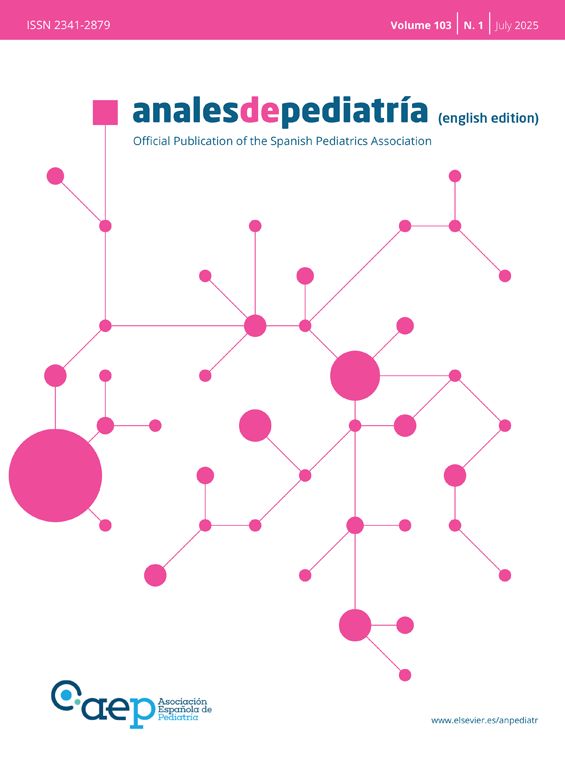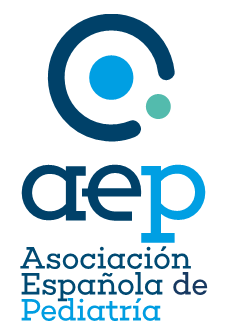Measles is the most contagious disease currently known. Its basic reproduction number (the infamous R0) is estimated to be between 6 and 60.1 There is no need to explain the significance of these figures in a scientific journal, and, in any case, everyone is familiar with the disaster movie scenario in which a single infected person can infect another 60, who in turn infect as many others, and so on and so forth until the director decides that the film is done.
Before the introduction of the measles vaccine in 1963, the disease killed more than three million people each year.2 Most of them were children.2 This was not one of the famous pandemics that we read about in history books or social media. It was an endemic disease that, amid flashing red lights, affected almost every child under the age of fifteen in outbreaks that recurred without fail every two or three years.2 Turn off your screen, for this is not a film. Today, measles continues to be endemic in many regions of the world, despite the existence of a vaccine with an effectiveness exceeding 95%.
One out of every three thousand individuals who contract the disease dies from it.2 One in every thousand develops encephalitis, which can cause neurologic sequelae.2 It is estimated that, since year 2000, the vaccine has prevented nearly 60 million deaths.2 Measles has several characteristics that make its eradication feasible1,2: the vaccine is effective, safe and induces long-lasting immunity, it is an exclusively human disease, with no animal reservoirs for the virus, and, while there are several viral genotypes, the virus is monotypic and its antigens are very stable.
So, what is going on? Why is a microorganism that should have fallen into oblivion still making headlines every year? Why were there up to eight active outbreaks1 in Spain in February 2025? Why were more than one hundred thousand cases reported in Europe in 2024?1 Why is measles still dominating the awards season in so many countries when it should have been off the theaters long ago, along with smallpox?
There is no question that we have largely brought this upon ourselves, but let’s not indulge in self-flagellation just yet. We will have ample time to confess to our sins surrounded by rashes. Right now, we need to aim our shots at a villain that can remain airborne up to four days to spread about before its famous morbilliform rash hits the conjunctiva of several bewildered pediatricians.
Who could stop an invisible enemy? Koplik and his gang, perhaps, but not the bulk of the soldiers currently safeguarding our health. Not the ever-growing percentage of health care providers, no longer that young, who have never diagnosed a case of measles because, thanks to vaccines, it has become a rare and unfamiliar disease. As the residents dither, the attending physician goes about the differential diagnosis. Eventually, it is the graying senior in the shift that urgently isolates that infant with general malaise, teary eyes and a seemingly nonspecific rash. In the few hours of indecision that it takes for this to happen, how many susceptible individuals have been within the range of the most contagious virus in the world?
Infants, immunocompromised individuals, unvaccinated individuals and a percentage of the children aged three to four years who have not yet received the second dose of vaccine. All of them will have been exposed for a few minutes, by chance, to an eager enemy, borne by minuscule droplets that the air spread about the waiting room or the bus. All of them will need close monitoring, as strict as if exposed to tuberculosis, to prevent the umpteenth outbreak of a disease that many a naïve person considers all but eradicated.
The greatest enemy of vaccines is their very own success. The near elimination of some diseases has led the population to believe that they no longer exist or to underestimate their risks.3 Figures do not matter, nobody reads the math, the past is no longer fearsome and measles parties are back in vogue. Science drowns in a maelstrom of TikToks and lies prevail through the massive pressure exerted by the followers of a handful of “enlightened” individuals.
None of it would matter if the infamous R0 of measles were smaller. But at this level of contagiousness, any vaccination coverage below 95% puts us all at risk, and any coverage below 90% pushes us to the edge of the cliff, especially the vulnerable among us. Including the more than 130 million infants estimated to be living in this world as you read these lines. Add to this a pandemic that precludes taking children to be vaccinated. Add wars, armed conflicts, natural disasters, lacks in infrastructure and problems in distribution and storage. As if this were not enough, there is the exponential progression of “infoxication” by vaccine-phobic movements and conspiracy theories emerging from the most unexpected and wealthiest countries in the world. That handful of “enlightened” individuals can cause a lot more harm when their basic reproduction number reaches viral levels. The math does not add up. And so it is that the adventure pioneered by the Lumiere brothers goes on today, as far as measles is concerned.
After elaborating on this catastrophic worldview, where it seems that nothing can get better, I must declare the complete opposite: that there is actually ample opportunity for action.
First of all, what ought to be conveyed to the population of Spain, and of most other developed countries, is reassurance. With high vaccination coverage rates, measles is under control. There will be epidemics, but not endemic disease. Efforts to maintain vaccination coverages above 95% should be prioritized by both health care systems and governments, including mandatory vaccination if coverage falls below 90%, as has already occurred in some European countries.
Secondly, we must be proud of what has been achieved to date. For instance, in 2016, the World Health Organization certified the elimination of measles in Spain, which has been verified every year since.1 But pride should not become an undercover enemy keeping us from seizing valuable opportunities. Like providing guidance, with empathy and patience, to any parents who consider not vaccinating the best option for their children3 or “catching up” any patients who have gone without the second dose for any reason.
Third, it is important to maintain a high level of suspicion on encountering any kind of morbilliform exanthema, quickly identifying and notifying any suspected case of measles and proceeding to the immediate isolation of the patient until the disease is ruled out. In the same vein, there must be an exhaustive contact investigation, with close monitoring of all contacts, considering the possibility of advancing vaccination to age 9 months in specific groups in the context of an outbreak (never counting this dose as the first in the series). Any of it is impossible if providers do not receive ongoing, up-to-date training on the signs and symptoms indicative of the disease. This is a legacy that the sages in the field should hammer into younger brains if we are not to return to the era of endemic measles.
All vaccines are important, but the measles vaccine, in particular, cannot be refused, not only on account of our own health, but for the health of everyone around us, especially the youngest.



